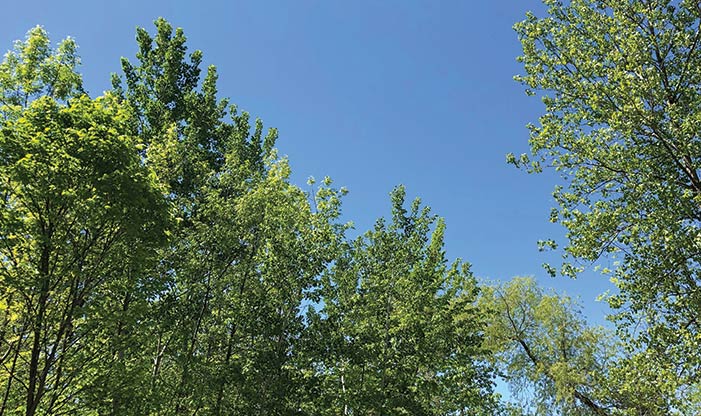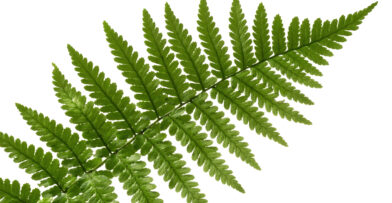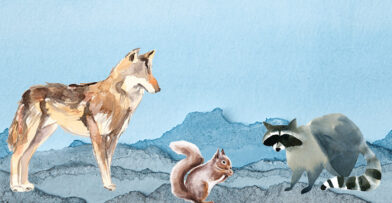Every detail you notice in the forests of Schlitz Audubon is as interesting as it is beautiful. Each tree has been designed by nature to fill a specific need. All together, they compose a complete system to provide food, shelter, structure, and splendor that makes the forest such a charming place to be. Hiking the trails at the Center, you will see the diverse characteristics of our many tree species.
Viewing Tree Species at the Center
As you head out of our main building, on the left you’ll find a wide stand of smooth white trunked trees, whose bark becomes cracked and gray at the base. Their leaves seem to shimmer in the breeze. The flat leaf stalks of quaking aspen allow the leaves to flutter and access more sunlight. The lighter backs reflect light so the whole tree seems to glitter from afar. By reproducing underground through root rhizomes, they can form new forests from just one tree. It’s quite possible that all of the trees you see in this stand are an exact genetic clone of only one or two parent plants.
In the deciduous forest, one of the darkest trees to be found is black cherry. At the Center, it’s found near the bridge on the way to the Pavilion. It can be identified by its dark gray flaky bark that peels in roundish plates all the way up its tall, unbranched trunk. At the top, bright green leaves emerge from broad reddish pink stipules, adhered to deep purple twigs. In the summer the tree will be covered in bunches of tiny white flowers. These flowers will later develop into pea-sized dark red to almost black berries. They are a tasty treat for birds. Although a bit tart, they are a wildlife favorite!
Food Transport Systems
Head to the sugar shack, where another world is hiding within the bark of a single tree. Notice the gray bark of the sugar maple – in the crevices tucked beneath the flat ridges you might notice a pinkish salmon color. This is actually the water and sugar transport system of the tree becoming dormant and adding to the corky layers of the bark. You might find a horizontal line of holes going across the tree trunk. These were left by the Yellow-bellied Sapsucker during its visit last migratory season. He uses the sap flowing just underneath the bark to his advantage. Drilling holes into these pipelines as he travels around the circumference of the tree allows the sugary sap to ooze out. When he returns, he has a meal of insects waiting for him in the sticky trap.
From Flowers to Legumes
Take a walk along the bluff of Lake Michigan, where the twisted dark branches of the black locust can be seen. Each tree can hold millions of tiny leaflets along with large clusters of white flowers hanging from the branches. As a legume, each flower looks similar to the garden pea. White curved petals protect the flowers’ pollen from being whisked away by the wind. Visitors like bumblebees and hummingbirds come to the flowers for nectar and pollinate each flower as they go. The flowers will then ripen into long black seed pods.
Protection for Wildlife
Some tree bark provides a little more structure as habitat for many different species. You can find aptly named shagbark hickory near the pond by the Pavilion. Its bark peels partially from the tree trunk in long vertical strips. All of these fissures provide shelter and protection for insects, their larvae, and metamorphosing pupa. Some of these gaps can even be large enough to house bats resting during the day. Notice the broad leaflets of the hickory, the lower branches can hold leaves up to 2 feet long. As the leaves ascend the tree they only grow to be about half as long. And since more light is available, they don’t need to grow as large to capture this limiting resource.
A broad spectrum of colors, patterns, and unique features can be found hidden within the forest. Visit for a morning or afternoon hiking session to see the Center’s trees and enjoy identifying them in their fascinating habitats. To learn more about identifying trees, join us for our two-part Summer Tree ID Workshop taking place on Saturdays, July 29 and August 5.


